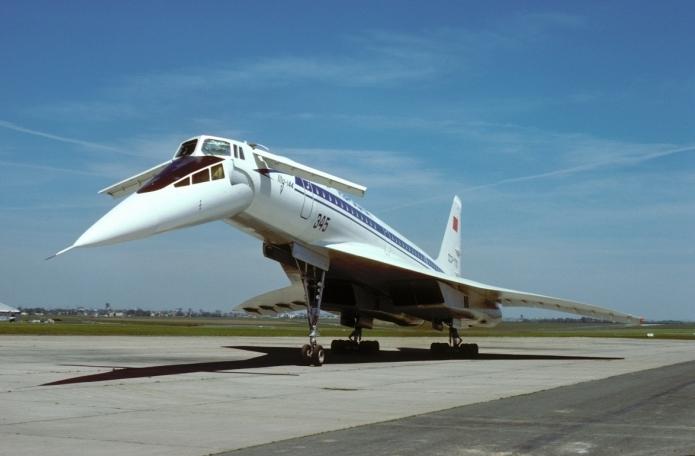Tu-144 is not just the “first swallow” of supersonic passenger aircraft. This is one of the symbols of the Country of Soviets of the Cold War era and its technical superiority over the Western world. The Tu-144, almost twice the speed of sound and several decades ahead of its time, laid the foundation for a new era of passenger aviation, which, however, has not yet occurred. His only competitor in this field - the English-French Concord - suffered an even more deafening fiasco.
In the sixties, humanity, perhaps, was still technologically and scientifically not ready for such achievements. Then world science knew practically nothing about metal fatigue. The whole history of the competition between these two machines was accompanied by continuous disasters and failures on both sides.
When it became known about the joint Anglo-French project to create a fundamentally new supersonic passenger airliner, the reaction of the Soviet Union was lightning fast. The answer to this project was to be the Tu-144. "Concord" was calculated on a cruising flight speed in the range of 2200-2300 km / h. The Soviet counterpart needed to surpass this indicator, like many others. Nikita Khrushchev in no way wanted to concede to his Western enemies.
The development of this ambitious project was entrusted to the Tupolev Design Bureau. The TU-144 brand was assigned to the new aircraft, and the Voronezh Aircraft Plant was engaged in its construction. The birth of the new brainchild of the Soviet aircraft industry before the Concorde and the technical superiority of the Soviet airliner over the Anglo-French machine were regarded only as the most important political tasks. They did not spare money for the construction of the Tu-144, as was customary in the USSR.

The whole structure of this supersonic metal bird was the embodiment of a bright and progressive technological idea: he submitted the blank to an automated CNC machine and at the output received a huge fragment of the fuselage or wing plane. Automation, of course, did not fail, but with this approach, for some reason, they forgot that semi-finished products of such a gigantic size and ingots needed an appropriate scale. It is quite difficult to cast them, which leads to the formation of local inhomogeneities, foreign inclusions and defects that weaken the metal.
Maybe this would not be a big deal if it were not for the purpose of the machine. After all, the TU-144 aircraft had to overcome the sound barrier, and therefore, withstand tremendous overloads. For example, after its not-so-long operational period, its technological rival Concorde, wings began to fall off right in flight. And it was not possible to find out the reason for a long time. He perfectly passed various tests. Including in deep pools under very high pressure. In the end, it was simply discontinued.
About the same fate befell the TU-144. After processing a structure made of an all-metal plate of large thickness, thin (up to two millimeters) jumpers remained in some places. They eventually burst, unable to withstand the constant huge overloads.
Nevertheless, the Tu-144 in terms of operating life significantly surpassed the Concord, although the memory of the crash of this machine still remains. Perhaps the most famous of them is the disaster that happened at the air show in Le Bourget in 1973. The invaluable experience gained during the creation of this machine was successfully used in the design and construction of heavy supersonic Tu-22M and Tu-160 airliners.
Until the mid-nineties, Tu-144s themselves were successfully used in various scientific studies: studying the planet’s ozone shell, solar eclipses, etc. Thirteen world records were set to modify this Tu-144D machine, which have not yet been broken.